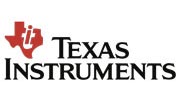
i
Cadence Design
Systems
Filter interviews by
Cadence Design Systems Interview Questions and Answers
128 Interview questions
Efficiently finding the median from a stream of integers requires maintaining a balanced data structure for dynamic data.
Use Two Heaps: Maintain a max-heap for the lower half and a min-heap for the upper half of the numbers to efficiently find the median.
Insertion: When a new number is added, decide which heap to insert it into based on its value relative to the current medians.
Balancing Heaps: After each insertio...
Sort an array of strings based on a user-defined order.
Define the custom order as a string, e.g., 'cba'.
Create a mapping of characters to their indices for quick lookup.
Use a sorting function that utilizes the mapping to sort the array.
Example: For array ['a', 'b', 'c'] and order 'cba', the result should be ['c', 'b', 'a'].
A copy constructor creates a new object as a copy of an existing object, ensuring proper resource management.
A copy constructor is a special constructor in C++ that initializes an object using another object of the same class.
Syntax: ClassName(const ClassName &obj) { /* copy data */ }
Used for deep copying when an object contains pointers to dynamically allocated memory.
Example: If class A has a pointer, the co...
Allocating memory for a vector involves reserving space for its elements to optimize performance and avoid reallocations.
Use `std::vector<Type> vec;` to declare a vector.
To allocate memory, use `vec.reserve(size);` to set capacity without changing size.
Example: `vec.reserve(10);` reserves space for 10 elements.
To initialize with a specific size, use `std::vector<Type> vec(size);`.
Example: `std::vector&...
Merge overlapping intervals in a list to create a consolidated list of intervals.
Sort the intervals by their start time. Example: [[1,3],[2,6],[8,10],[15,18]] becomes [[1,3],[2,6],[8,10],[15,18]].
Initialize an empty list to hold merged intervals.
Iterate through the sorted intervals and compare the current interval with the last merged interval.
If they overlap (current start <= last end), merge them by updating ...
A virtual table is a mechanism used in object-oriented programming to support dynamic method resolution for polymorphism.
Virtual tables (vtables) store pointers to virtual functions of a class.
Each class with virtual functions has its own vtable.
When an object is created, it holds a pointer to its class's vtable.
Example: In C++, if class A has a virtual function, derived class B can override it, and the vtable wil...
A FIFO checker is a verification component used to monitor and validate the behavior of a First-In-First-Out buffer in a design.
Implement a monitor that tracks the input and output operations of the FIFO buffer
Check that the data is read out in the same order it was written in
Verify that the FIFO buffer does not overflow or underflow
Use assertions to flag any violations of FIFO behavior
Example: Monitor the write a...
C++ is a powerful, high-performance programming language with features like OOP, templates, and memory management.
C++ supports Object-Oriented Programming (OOP) with classes and inheritance. Example: class Base { ... }; class Derived : public Base { ... };
C++ allows operator overloading, enabling custom behavior for operators. Example: class Complex { public: Complex operator+(const Complex& other) { ... }; };
...
Virtual functions allow a function to be overridden in a derived class, enabling polymorphic behavior.
Virtual functions are declared in a base class with the 'virtual' keyword.
They are meant to be overridden in derived classes to provide specific implementations.
When a virtual function is called through a base class pointer or reference, the actual function to be executed is determined at runtime based on the obje...
Command to find lines with 'ERROR' in log file and copy to new file
Use grep command to search for 'ERROR' in log file: grep 'ERROR' logfile.txt
Use redirection to copy the output to a new file: grep 'ERROR' logfile.txt > newfile.txt
Cadence Design Systems Interview Experiences
65 interviews found
I appeared for an interview in Jan 2025.
(2 Questions)
- Q1. Are you comfortable with this role, general corporate behaviour questions, background information
- Q2. Puzzles
(2 Questions)
- Q1. Test creation, case study
- Q2. Python, selenium, SQL
(1 Question)
- Q1. Corporate behaviour questions, 2 puzzle questions
(1 Question)
- Q1. Compensation discussion
I appeared for an interview in Apr 2024.
(6 Questions)
- Q1. Introduce yourself
- Ans.
I am a passionate and experienced design engineer with a strong background in mechanical engineering.
Graduated with a degree in Mechanical Engineering from XYZ University
Worked for 5 years at ABC Company designing innovative products
Proficient in CAD software such as SolidWorks and AutoCAD
Strong problem-solving skills and attention to detail
Collaborated with cross-functional teams to bring projects to completion
- Q2. Explain matching and it type in detail with example. Why do we do matching.
- Ans.
Matching is the process of comparing two or more items to determine if they are the same or similar.
Matching involves comparing characteristics or features of items to find similarities or differences.
Types of matching include pattern matching, string matching, and image matching.
Matching is used in various fields such as computer science, psychology, and genetics.
Example: Matching fingerprints to identify a suspect in...
- Q3. Scenario: 2 blocks 100 um apart. current of 8 mA flows with 10 ohms resistance. What should be the metal width for routing.(Need to show the complete calculation)
- Ans.
To determine the metal width for routing, calculate the resistance and use it to find the required width.
Calculate resistance using R = ρ * (L/A), where ρ is the resistivity of the metal, L is the distance between blocks, and A is the cross-sectional area of the metal.
Use Ohm's Law (V = I * R) to find the voltage drop across the metal.
Finally, use the voltage drop and current to determine the required metal width.
- Q4. Explain block functionality of your previous project in detail and how your started your layout till tape out.
- Ans.
Block functionality of previous project involved data processing and storage. Layout started with floorplanning and power grid design.
Implemented data processing block using Verilog HDL
Designed storage block using flip-flops and registers
Started layout with floorplanning to allocate space for different blocks
Designed power grid to ensure proper distribution of power to all blocks
Performed physical design tasks such as ...
- Q5. Em&IR in detail and how these can be will resolved
- Ans.
Em&IR stands for Emissions and Immunity in the context of design engineering. Resolving these issues involves identifying sources of electromagnetic interference and implementing mitigation techniques.
Em&IR refers to the study of electromagnetic emissions from electronic devices and their susceptibility to external interference.
Common sources of electromagnetic interference include power supplies, motors, and wireless ...
- Q6. Write a command to find the lines containing the word "ERROR" from a log file and copy it to new file.
- Ans.
Command to find lines with 'ERROR' in log file and copy to new file
Use grep command to search for 'ERROR' in log file: grep 'ERROR' logfile.txt
Use redirection to copy the output to a new file: grep 'ERROR' logfile.txt > newfile.txt
(5 Questions)
- Q1. What is latchup and how it can be resolved
- Ans.
Latchup is a condition in integrated circuits where parasitic thyristors are inadvertently triggered, causing a high current flow.
Latchup can be resolved by adding guard rings around sensitive components to prevent parasitic thyristors from triggering.
Using layout techniques such as spacing sensitive components further apart can also help prevent latchup.
Properly designing the power distribution network and ensuring pr...
- Q2. What is Antenna effect and how it can be resolved.
- Ans.
Antenna effect is the phenomenon where the gate of a transistor behaves like an antenna, causing unwanted signal interference.
Antenna effect occurs in integrated circuits due to the gate acting as an antenna and picking up external signals.
It can lead to performance degradation and reliability issues in the circuit.
To resolve antenna effect, techniques like adding shielding layers, changing layout design, and using gua...
- Q3. Why do we go for higher metal jump not for lower metal jump for resolving Antenna.
- Ans.
Higher metal jumps are preferred over lower metal jumps for resolving antenna issues due to better signal propagation and reduced interference.
Higher metal jumps provide better signal propagation and reduced interference compared to lower metal jumps.
Higher metal jumps help in achieving better antenna performance and coverage.
Lower metal jumps may result in signal degradation and increased interference.
Higher metal jum...
- Q4. Explain WPE and how it can be taken care.
- Ans.
WPE stands for Water Pressure Equalization. It is a system used to maintain equal pressure in a water distribution network.
WPE helps prevent water hammer, which can damage pipes and fittings.
It ensures consistent water pressure throughout the network, even when demand fluctuates.
Regular maintenance of valves, pumps, and pressure regulators is essential to ensure the WPE system functions properly.
- Q5. What is LOD effect(I was unable to answer this one)
- Ans.
LOD effect refers to the impact of line-of-sight distance on signal strength and quality in communication systems.
LOD stands for Line of Sight Distance, crucial in wireless communication.
Signal strength decreases with increased distance from the transmitter.
Obstacles like buildings can cause signal degradation, known as multipath fading.
Example: In urban areas, LOD effect can lead to poor mobile reception due to tall s...
(2 Questions)
- Q1. Asking regarding the gap in my career.
- Q2. Am I comfortable with job location.
- Ans.
Yes, I am comfortable with the job location.
I have researched the area and feel it is a good fit for me.
I have visited the location and liked what I saw.
I am willing to relocate if necessary for this opportunity.
Interview Preparation Tips
2. Whenever you do your job try to corelate it with your theoretical knowledge. In interview you will be able to explain in detail with practical knowledge.
3. Believe in yourself.(This is what you need the most)
Skills evaluated in this interview
(1 Question)
- Q1. Write a FIFO checker
- Ans.
A FIFO checker is a verification component used to monitor and validate the behavior of a First-In-First-Out buffer in a design.
Implement a monitor that tracks the input and output operations of the FIFO buffer
Check that the data is read out in the same order it was written in
Verify that the FIFO buffer does not overflow or underflow
Use assertions to flag any violations of FIFO behavior
Example: Monitor the write and re...
I appeared for an interview in Mar 2025, where I was asked the following questions.
- Q1. Inheritancebased question, virtual function 2 times called
- Q2. Sort and array in user defined order
- Ans.
Sort an array of strings based on a user-defined order.
Define the custom order as a string, e.g., 'cba'.
Create a mapping of characters to their indices for quick lookup.
Use a sorting function that utilizes the mapping to sort the array.
Example: For array ['a', 'b', 'c'] and order 'cba', the result should be ['c', 'b', 'a'].
- Q3. Median from stream of integers
- Ans.
Efficiently finding the median from a stream of integers requires maintaining a balanced data structure for dynamic data.
Use Two Heaps: Maintain a max-heap for the lower half and a min-heap for the upper half of the numbers to efficiently find the median.
Insertion: When a new number is added, decide which heap to insert it into based on its value relative to the current medians.
Balancing Heaps: After each insertion, en...
- Q4. Smart Pointer and all types
- Q5. Copy contructor
- Ans.
A copy constructor creates a new object as a copy of an existing object, ensuring proper resource management.
A copy constructor is a special constructor in C++ that initializes an object using another object of the same class.
Syntax: ClassName(const ClassName &obj) { /* copy data */ }
Used for deep copying when an object contains pointers to dynamically allocated memory.
Example: If class A has a pointer, the copy co...
- Q6. Shallow and deep copy
- Q7. Tree taversals all types
- Ans.
Tree traversals are methods for visiting all nodes in a tree data structure, including pre-order, in-order, post-order, and level-order.
Pre-order Traversal: Visit root, then left subtree, then right subtree. Example: For tree (A, B, C), output is A, B, C.
In-order Traversal: Visit left subtree, then root, then right subtree. Example: For tree (A, B, C), output is B, A, C.
Post-order Traversal: Visit left subtree, then ri...
Interview Preparation Tips
I applied via Campus Placement and was interviewed in Jun 2024. There were 2 interview rounds.
(2 Questions)
- Q1. Capacitor and voltage in series and parallel
- Ans.
Capacitors in series add reciprocally, in parallel add directly. Voltage in series is the sum, in parallel is the same.
Capacitors in series: 1/Ctotal = 1/C1 + 1/C2
Capacitors in parallel: Ctotal = C1 + C2
Voltage in series: Vtotal = V1 + V2
Voltage in parallel: Vtotal = V1 = V2
- Q2. RLC circuit and circuit theory
(2 Questions)
- Q1. Analyse the output of the circuitry
- Ans.
The output of the circuitry needs to be analyzed for functionality and accuracy.
Examine the input and output signals to ensure they are within expected ranges
Check for any noise or interference in the output
Verify that the circuit is functioning as designed based on the specifications
Look for any potential issues or errors in the output
- Q2. Draw the output waveforms
- Ans.
The output waveforms can be drawn based on the input signal and circuit configuration.
Understand the input signal characteristics (frequency, amplitude, etc.)
Analyze the circuit components and their effects on the signal
Draw the output waveform based on the input and circuit analysis
(2 Questions)
- Q1. Add two linked list
- Ans.
To add two linked lists, iterate through both lists simultaneously and add corresponding nodes, considering carry from previous addition.
Create a dummy node to hold the result.
Initialize current node to dummy node.
Iterate through both lists, adding values and carry from previous addition.
Move to next nodes in both lists.
Handle cases where one list is longer than the other.
Handle final carry if present.
- Q2. Find shortest path in graph
- Ans.
Use Dijkstra's algorithm to find the shortest path in a graph
Implement Dijkstra's algorithm to find the shortest path between two nodes in a graph
Maintain a priority queue to keep track of the shortest distance to each node
Update the shortest distance to each node as you traverse the graph
Track the path by storing the previous node for each node visited
(2 Questions)
- Q1. Check tree is BST
- Ans.
Check if a binary tree is a Binary Search Tree (BST)
Perform an in-order traversal of the tree and check if the resulting array is sorted
Keep track of the previous node value during traversal to compare with the current node value
Ensure that each node's value is greater than the previous node's value in the in-order traversal
- Q2. Check substring palindrome or not
- Ans.
Check if a substring in an array of strings is a palindrome or not.
Iterate through each string in the array
For each string, check if any of its substrings are palindromes
Return true if a palindrome substring is found, false otherwise
Skills evaluated in this interview
I applied via Campus Placement
It was an online assesment followed by an offline assessment.
(3 Questions)
- Q1. Create a Linked List
- Ans.
A linked list is a data structure where each element points to the next element in the sequence.
Create a Node class with data and next pointer
Initialize a head pointer to null
Add elements by creating new nodes and updating next pointers
Traverse the list by following next pointers
- Q2. Insert a node in a Linked List
- Ans.
To insert a node in a Linked List, update the next pointer of the new node to point to the current node's next, then update the current node's next pointer to the new node.
Create a new node with the desired value
Set the new node's next pointer to the current node's next
Update the current node's next pointer to the new node
- Q3. Project based questions and CS fundamentals
Skills evaluated in this interview
I applied via Campus Placement and was interviewed in Mar 2024. There were 3 interview rounds.
(1 Question)
- Q1. CGPA over 8 was the criteria
Logical Reasoning, Verbal Reasoning , Quantitative Ability, Digital Electronics
DSP, C, Verilog, Digital Design
(5 Questions)
- Q1. Array addition of two numbers
- Ans.
Add two numbers represented as arrays
Iterate through the arrays from right to left, adding digits and carrying over if necessary
Handle cases where one array is longer than the other
Return the result as a new array
- Q2. Access modifiers in java
- Ans.
Access modifiers in Java control the visibility of classes, methods, and variables.
There are four types of access modifiers in Java: public, protected, default (no modifier), and private.
Public: accessible from any other class.
Protected: accessible within the same package or subclasses.
Default: accessible only within the same package.
Private: accessible only within the same class.
Example: public class MyClass {}
- Q3. Complete code of all projects
- Ans.
It is not common practice to provide complete code of all projects in an interview setting.
It is not recommended to share complete code of all projects due to confidentiality and intellectual property concerns.
Instead, focus on discussing the technologies used, challenges faced, and solutions implemented in your projects.
Provide code snippets or high-level overviews of your projects to showcase your skills and experien...
- Q4. Deep learning- Yolov5 architecture, details on kernel size, reason for choosing Yolov5, preprocessing techniques
- Q5. BLE(Bluetooth Low Energy), Macros in C
Skills evaluated in this interview
(2 Questions)
- Q1. Explain the working of CMOS inverter
- Ans.
CMOS inverter is a type of logic gate that converts input signals into their complementary outputs.
CMOS inverter consists of a PMOS transistor and an NMOS transistor connected in series.
When input is high, PMOS conducts and NMOS is off, resulting in output low.
When input is low, NMOS conducts and PMOS is off, resulting in output high.
CMOS technology is widely used in digital integrated circuits due to its low power con...
- Q2. Write a verilog code for sequence detectro
- Ans.
Verilog code for sequence detector
Use state machines to detect the desired sequence
Define states for each part of the sequence
Use combinational logic to transition between states
Implement the Verilog code using if-else statements and always blocks
Skills evaluated in this interview
I applied via Campus Placement and was interviewed in Dec 2024. There were 2 interview rounds.
Asked about Network theory
(2 Questions)
- Q1. Asked about electrical questions
- Q2. Does not remember
Interview Preparation Tips
Top trending discussions






Cadence Design Systems Interview FAQs
Some of the top questions asked at the Cadence Design Systems interview -
The duration of Cadence Design Systems interview process can vary, but typically it takes about less than 2 weeks to complete.
Tell us how to improve this page.
Cadence Design Systems Interviews By Designations
- Cadence Design Systems Software Developer Interview Questions
- Cadence Design Systems Design Engineer Interview Questions
- Cadence Design Systems Intern Interview Questions
- Cadence Design Systems Softwaretest Engineer Interview Questions
- Cadence Design Systems Software Engineer Interview Questions
- Cadence Design Systems Software Engineer Intern Interview Questions
- Cadence Design Systems Test Engineer Interview Questions
- Cadence Design Systems Senior Software Engineer Interview Questions
- Show more
Interview Questions for Popular Designations
Overall Interview Experience Rating
based on 50 interview experiences
Difficulty level
Duration
Interview Questions from Similar Companies
Cadence Design Systems Reviews and Ratings
based on 298 reviews
Rating in categories
15-17 Yrs
Not Disclosed
4-8 Yrs
Not Disclosed
|
Lead Software Engineer
158
salaries
| ₹18.2 L/yr - ₹50.2 L/yr |
|
Design Engineer
118
salaries
| ₹11.2 L/yr - ₹25 L/yr |
|
Principal Software Engineer
117
salaries
| ₹24.9 L/yr - ₹60 L/yr |
|
Software Engineer2
117
salaries
| ₹15 L/yr - ₹29 L/yr |
|
Software Engineer
92
salaries
| ₹9 L/yr - ₹26 L/yr |

Synopsys

Qualcomm

Intel

Molex
- Home >
- Interviews >
- Cadence Design Systems Interview Questions












